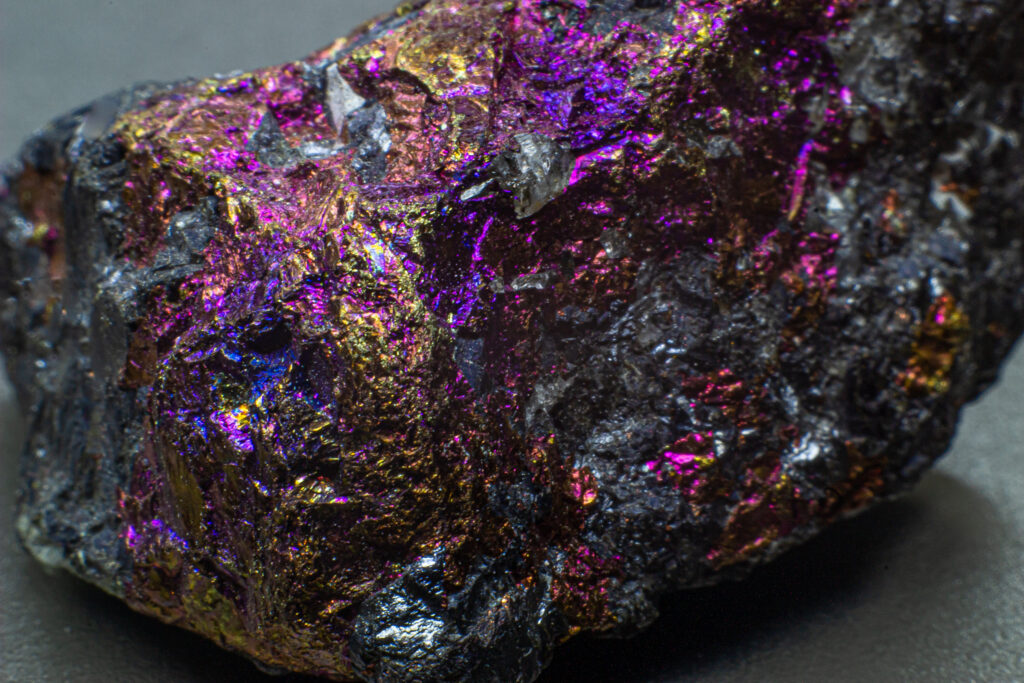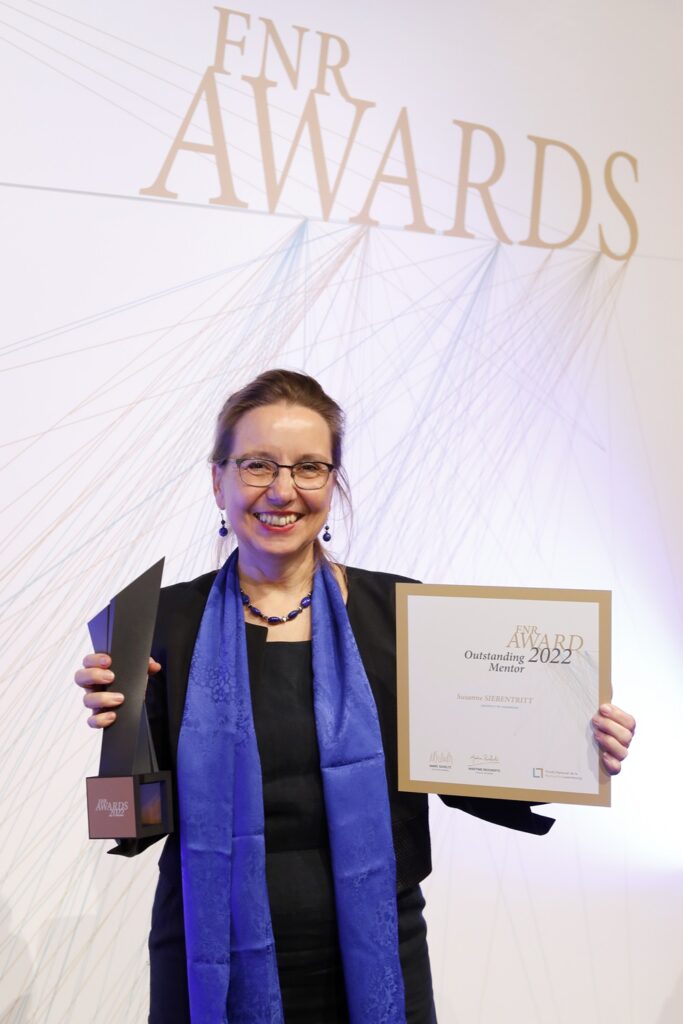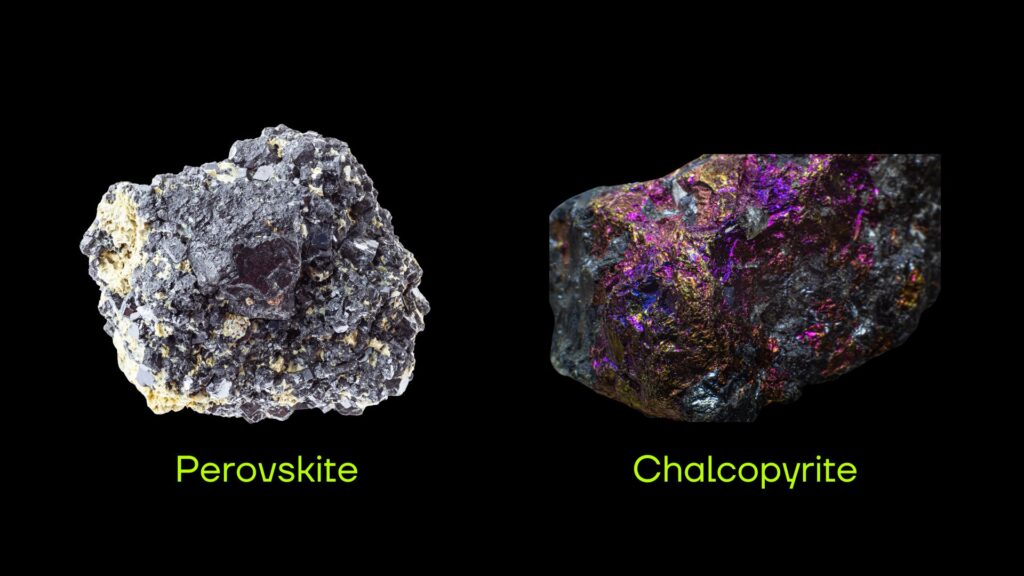BACK TO RESEARCH WITH IMPACT: FNR HIGHLIGHTS
As the FNR marks 25 years since its creation, we highlight 25 examples of FNR-supported research with impact. Since arriving in Luxembourg in 2007, Susanne Siebentritt has led a team pushing the boundaries of solar cells. The team works on the next generation of solar cells – tandem solar cells – which require less energy for production, while also being more effective than current solar cells.
The field of solar cells has and continues to develop extremely fast. The industry has moved from being niche to a major energy source. The efficiencies of industrial modules, as well as the records in the lab improve every year.
“17 years ago, tandem cells were considered too expensive and not industrially viable, now they are predicted the next big step in industry.”
Over the last 25 years, Susanne Siebentritt, Professor in Physics at the University of Luxembourg since 2007, has used optical methods to study solar cells.

“I have moved from the basic studies of material properties to the analysis of complete devices. Our methods now help predict the efficiency of solar cells before we finish all production steps. Our goal is to contribute to making thin film solar cells better, because we are convinced that they have to play a crucial role in mitigating the climate crisis. ”Susanne Siebentritt Full Professor in Physics & Head of Laboratory for Photovoltaics at the University of Luxembourg
Higher efficiency equals less cost
Solar cells that need less energy in production have even less carbon emissions compared to state of the art solar cells, which is already 100 to 1000 times less than electricity from fossil sources.

Benefits of tandem approach to solar cells
Siebentritt’s research interest is twofold: the development of new thin film solar cells and the semiconductor physics of the materials used in these cells.
With her team, Siebentritt works on tandem solar cells. A tandem solar cell consists of two layers of semiconductors that each absorb different wavelengths of light and convert this energy into electricity.
In a typical thin-film tandem solar cell, these semiconductors are stacked on top of each other. Layering them in this way yields two solar cells that, together, produce a tandem effect. Much like having two cyclists on a tandem bike combine their power, layering solar cells increases their efficiency for converting sunlight to electricity.
These combined solar cells can namely exploit a broader spectrum of light wavelengths.
Among the team’s highlights are making a detailed analysis of the electronic defects in chalcopyrites, the material they use in their solar cells. The team also explained how certain types of disorder reduce the voltage in solar cells and how to reduce this disorder. Additionally, a new passivated back contact that solves a major problem in these solar cells has been developed, as well as the first transparent wide gap chalcopyrite solar cells that can be used in tandem solar cells.
From collaborations to informing photovoltaics policies
Since Luxembourg has very little photovoltaic industry, Siebentritt is very involved with industry across Europe, but also had one project with Luxembourgish industry on detectors, which are in a way similar to solar cells. Siebentritt also gets occasionally questions from members of Luxembourg parliament on photovoltaics in general.
Siebentritt collaborates closely with researchers at the Luxembourg Institute of Science and Technology (LIST), who provide special analysis for her solar cells.

“My FNR projects always include some subcontracting with LIST – which has established a very fruitful cooperation. And all of our PRIDE projects were together with LIST – and I enjoy all of them, in particular for the cooperation. The main part of the actual research in the lab is done by my PhD students and postdoc. They enable what I do. I learn from the good ones. While in Luxembourg I have been training as the main supervisor 23 PhD students and 20 postdocs. Some of my PhD students became my postdoc afterwards. Many of them work now in photovoltaics or semiconductor industry. Some have positions in research institutions, some have become professors. ”Susanne Siebentritt Full Professor in Physics & Head of Laboratory for Photovoltaics at the University of Luxembourg
Siebentritt was also recognised with an FNR Award for Outstanding Mentor, as well as an FNR Award for Outstanding Scientific Publication (together with co-authors). She has also been heavily involved in several PRIDE programmes – FNR-supported Doctoral Training Units.
Siebentritt for example coordinated the PRIDE Doctoral Training Unit (DTU) MASSENA, together with Emmanuel Defay from the Luxembourg Institute of Science and Technology (LIST), which involved training 22 PhD candidates on the topic of materials for sensing and energy harvesting.


Key questions for the future
“There are currently two options for the top cell in tandem cells: perovskites or chalcopyrites. Perovskites have very good efficiencies but issues with stability, whereas chalcopyrites are proven stable, but so far lack the efficiency. The race is open, I decided to work on improving the efficiency of chalcopyrites.”
“The technology will clearly move towards tandem cells. My dream is to finish an idea, that we first realised in 2002: a tandem solar cell, where both cells are chalcopyrite. And the dream is to show efficiencies better than the best single junction cells. This would represent a cell that’s higher in efficiency than state of the art and at the same time lower in carbon emissions. ”Susanne Siebentritt Full Professor in Physics & Head of Laboratory for Photovoltaics at the University of Luxembourg
Susanne Siebentritt’s FNR projects (main applicant- PRIDE not included)
| Project title | Call year | FNR Funding instrument |
| Epitaxial chalcopyrite films for chalcopyrites to clarify the role of alkalis | 2023 | CORE |
| Fundamental limitations of thin film solar cell efficiencies | 2022 | CORE |
| Radiative efficiency in advanced sulfide chalcopyrites for solar cells | 2021 | INTER |
| How Tail states in the Absorber Influence and Limit Solar cell efficiency | 2020 | CORE |
| The role of the selenium vacancy in Cu(InGa)Se2 solar cells | 2017 | CORE |
| Interaction with low energy photons | 2016 | BRIDGES |
| Correlative characterization of co-evaporated Cu2ZnSnSe4 thin-films | 2015 | CORE |
| Cu rich CIS – the effect of potassium treatment | 2014 | CORE |
| Optical detection of deep defects in chalcopyrite semiconductors | 2013 | CORE |
| Kesterite in thin film solar cells – 2 | 2011 | CORE |
| Cu rich absorbers for highly efficient CIGS solar cells | 2011 | CORE |
| Kesterites in thin film solar cells | 2008 | CORE |
| 2007 dEck: defects in chalcopyrites – Advanced characterisation | 2007 | INTER |
Related Funding Instruments
Related highlights
MASSENA: A Doctoral Training Unit centred around materials for sensing and energy harvesting
Launched in 2015/16, the FNR’s PRIDE programme provides block PhD grants to Doctoral Training Units (DTUs). The MASSENA DTU brings…
Read more
Research trends: Tandem solar cells – two-packs that reach new efficiency records
As part of a new series, the FNR speaks to five experts about research trends in their domain. A key…
Read more
Related highlights
25 examples of research with impact: Driving innovation in software engineering, security, and AI
As the FNR marks 25 years since its creation, we highlight 25 examples of FNR-supported research with impact. Since arriving…
Read more
25 examples of research with impact: The science of fairness – inside inequality
As the FNR marks 25 years since its creation, we highlight 25 examples of FNR-supported research with impact. Since arriving…
Read more
25 examples of research with impact: A solid foundation for artificial intelligence
As the FNR marks 25 years since its creation, we highlight 25 examples of FNR-supported research with impact. Artificial intelligence…
Read more
25 examples of research with impact: Smart materials for a sustainable future
As the FNR marks 25 years since its creation, we highlight 25 examples of FNR-supported research with impact. Since arriving…
Read more
25 examples of research with impact: Advancing AI and Computer Vision: From space tech to better healthcare
As the FNR marks 25 years since its creation, we highlight 25 examples of FNR-supported research with impact. Since arriving…
Read more
25 examples of research with impact: Understanding the evolution of the workplace in the digital era
As the FNR marks 25 years since its creation, we highlight 25 examples of FNR-supported research with impact. Active in…
Read more